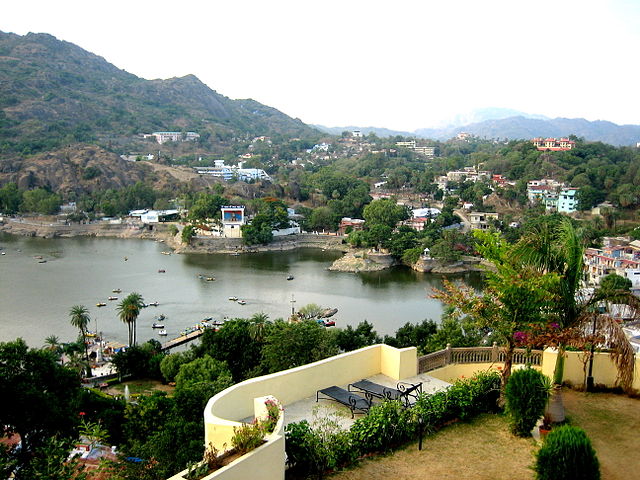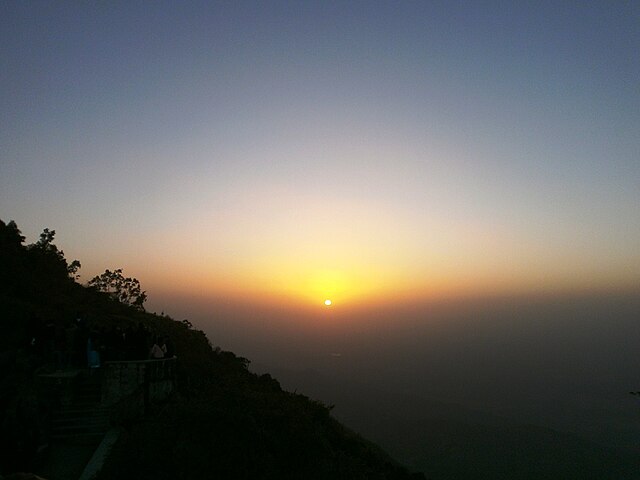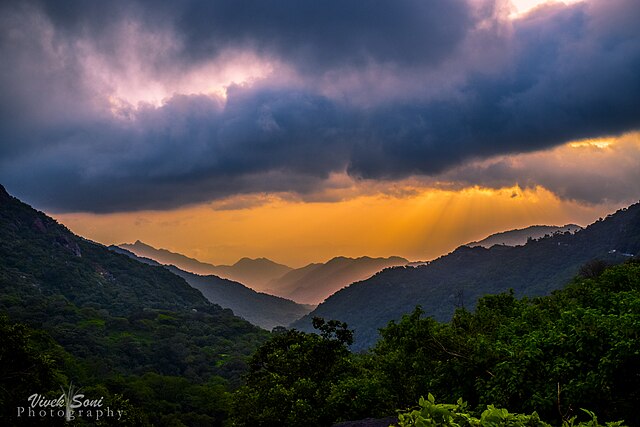Picture this: you’re in the heart of Rajasthan, where temperatures can soar above 45°C, yet there’s a magical place where you can actually need a sweater! Welcome to Mount Abu, the state’s only hill station that defies the desert’s scorching reputation. But what makes Mount Abu’s temperature so special, and why should you care about this cool oasis in the Thar Desert?
Mount Abu isn’t just another tourist destination – it’s a meteorological marvel. While the rest of Rajasthan bakes under the relentless sun, this hill station maintains temperatures that would make you forget you’re in one of India’s hottest states. The temperature difference between Mount Abu and nearby plains can be as dramatic as 10-15°C, making it a natural air conditioner in the desert.
Understanding Mount Abu’s Unique Climate
Have you ever wondered how a place in Rajasthan can be cool year-round? The secret lies in Mount Abu’s unique geographical position and elevation. Perched at an altitude of 1,220 meters above sea level, this hill station enjoys what meteorologists call a “subtropical highland climate.”
Unlike the typical desert climate that dominates Rajasthan, Mount Abu experiences moderate temperatures throughout the year. The Aravalli Range acts like a natural barrier, creating a microclimate that’s dramatically different from the surrounding desert landscape. This isn’t just geography – it’s nature’s own climate control system.
The temperature patterns here follow a completely different rhythm compared to the plains. While cities like Jodhpur and Jaisalmer struggle with extreme heat, Mount Abu maintains a comfortable temperature range that attracts visitors from across India and beyond.
Seasonal Temperature Breakdown

Understanding Mount Abu’s seasonal temperature patterns is crucial for planning your visit. Each season brings its own charm and temperature characteristics that cater to different preferences and activities.
Summer Temperature in Mount Abu (March to June)
Summer in Mount Abu is what dreams are made of, especially if you’re escaping from the scorching plains of Rajasthan. During these months, when the desert regions experience temperatures above 40°C, Mount Abu maintains a pleasant range of 23°C to 33°C.
The daytime temperatures hover around 28-33°C, which might sound warm, but it’s incredibly comfortable compared to the rest of Rajasthan. What’s even more remarkable is the nighttime temperature, which can drop to a cool 18-23°C. Imagine needing a light jacket in Rajasthan during summer – that’s the magic of Mount Abu!
May and June are typically the warmest months, but even then, the temperature remains bearable. The cool evening breeze that sweeps through the hill station provides natural relief, making outdoor activities enjoyable even during peak summer.
Monsoon Temperature and Weather (July to September)
The monsoon season transforms Mount Abu into a completely different world. The temperature during this period ranges from 20°C to 28°C, with high humidity levels due to the rainfall. While the days are warm and humid, the frequent showers keep the temperature comfortable.
This season is characterized by sudden temperature drops during rainfall. You might experience a pleasant 25°C during the day, but when the monsoon clouds roll in, the temperature can quickly drop to a refreshing 18-20°C. It’s like nature’s own air conditioning system switching on and off throughout the day.
The post-rain temperature is particularly delightful, with the air feeling fresh and crisp. However, the humidity levels can make the actual temperature feel slightly warmer than what the thermometer reads.
Winter Temperature in Mount Abu (October to February)
Winter is when Mount Abu truly shines as a temperature paradise. This season offers the most comfortable and pleasant weather conditions, with temperatures ranging from 12°C to 24°C. The days are warm and sunny, perfect for sightseeing, while the nights are cool and crisp.
December and January are the coldest months, with nighttime temperatures occasionally dropping to 8-10°C. During these chilly nights, you’ll definitely need warm clothing, which is quite unusual for Rajasthan. The daytime temperature during winter rarely exceeds 24°C, making it ideal for outdoor activities and exploration.
The winter temperature in Mount Abu is so pleasant that it attracts visitors from across North India, especially those looking to escape the harsh winters of the northern plains or the humidity of coastal regions.
Monthly Temperature Guide
Let’s dive deeper into what you can expect temperature-wise throughout the year in Mount Abu.
January Temperature – The Coldest Month
January brings the coolest temperatures to Mount Abu, with daytime highs around 20-24°C and nighttime lows that can dip to 8-12°C. This is when Mount Abu experiences its winter peak, and the temperature difference between day and night is most pronounced.
The mornings start chilly, often requiring warm clothing, but as the sun climbs higher, the temperature becomes perfectly comfortable for outdoor activities. By afternoon, you might find yourself in just a t-shirt, only to reach for that sweater again as evening approaches.
February to March – Pleasant Spring Weather
As winter transitions to spring, February and March offer some of the most pleasant temperatures in Mount Abu. Daytime temperatures rise to a comfortable 22-26°C, while nights remain cool at 10-15°C.
This period is characterized by clear skies, gentle breezes, and moderate temperatures that make every outdoor activity enjoyable. The temperature during these months is perfect for trekking, sightseeing, and photography.
April to May – Peak Summer Relief
April and May represent the peak summer season, but in Mount Abu, this translates to delightfully warm days with temperatures ranging from 25-32°C. The nights remain pleasantly cool at 18-22°C, providing natural relief from the day’s warmth.
During these months, while the rest of Rajasthan swelters, Mount Abu becomes a refuge for heat-weary travelers. The temperature difference between Mount Abu and nearby cities like Udaipur or Jodhpur can be as much as 15°C!
June to August – Monsoon Magic
The monsoon months bring a unique temperature profile to Mount Abu. June marks the beginning of the rainy season, with temperatures ranging from 22-30°C. The humidity increases, but the frequent showers keep the temperature comfortable.
July and August see the heaviest rainfall, with temperatures staying between 20-28°C. The constant cloud cover and rainfall create a natural cooling effect, making the temperature feel even more pleasant than the actual readings suggest.
September to November – Post-Monsoon Bliss
Post-monsoon Mount Abu offers some of the year’s best weather conditions. September starts with temperatures around 22-30°C, gradually cooling down through October and November. By November, the temperature ranges from 18-26°C, signaling the approach of the pleasant winter season.
This period combines the freshness left by the monsoons with the comfortable temperatures of approaching winter. The air is clean, the landscape is green, and the temperature is just perfect for all kinds of activities.
December – Perfect Winter Escape
December in Mount Abu brings crisp, cool weather with temperatures ranging from 12-22°C. The days are bright and sunny, while the nights can be quite chilly, sometimes requiring heaters in accommodations.
This month offers the perfect balance – warm enough during the day to enjoy outdoor activities, yet cool enough to experience a proper winter atmosphere, which is rare in Rajasthan.
Factors Affecting Mount Abu’s Temperature

Several geographical and meteorological factors contribute to Mount Abu’s unique temperature patterns.
Altitude and Its Impact
The primary factor behind Mount Abu’s pleasant temperature is its elevation. At 1,220 meters above sea level, the hill station follows the basic principle of temperature decrease with altitude. For every 1000 meters of elevation gain, temperature typically drops by about 6.5°C.
This elevation advantage means that Mount Abu automatically enjoys cooler temperatures compared to the surrounding plains. Even during the hottest summer days, the altitude provides a natural cooling effect that keeps temperatures manageable.
Aravalli Range Influence
The Aravalli Range plays a crucial role in shaping Mount Abu’s temperature patterns. These ancient mountains act as a barrier against hot desert winds, creating a microclimate that’s markedly different from the surrounding areas.
The hills also influence precipitation patterns, which in turn affect temperature. The orographic effect causes moisture-laden clouds to rise and cool, leading to rainfall that further moderates the temperature.
Best Time to Visit Based on Temperature Preferences
Your ideal time to visit Mount Abu largely depends on your temperature preferences and planned activities.
If you love cool, crisp weather and don’t mind chilly nights, December to February offers the most comfortable temperatures. This period is perfect for those who want to experience a proper winter, complete with the need for warm clothing.
For those who prefer moderate temperatures without the winter chill, March to May provides warm days and pleasant nights. This is ideal for families with children or elderly members who might find the winter temperatures too cold.
Monsoon lovers who enjoy the romance of rainfall and don’t mind humidity should consider June to September. The temperature during this period is moderate, and the frequent showers create a magical atmosphere.
What to Pack for Different Temperature Conditions
Packing for Mount Abu requires consideration of its variable temperature conditions throughout the year.
For winter visits (December to February), pack warm clothing including sweaters, jackets, and closed shoes. The temperature difference between day and night is significant, so layering is key. Don’t forget a warm shawl or jacket for evening strolls.
Summer visits (March to June) require light cotton clothing for the day, but always pack a light sweater or jacket for the evenings when temperatures can drop by 10-15°C. Comfortable walking shoes are essential as the temperature makes outdoor exploration enjoyable.
Monsoon season packing should include waterproof clothing, umbrellas, and quick-dry fabrics. Despite the pleasant temperature, the high humidity and frequent showers require specific clothing choices.
Temperature Comparison with Other Hill Stations
Mount Abu’s temperature patterns are unique among Indian hill stations. Unlike the extreme cold of stations like Shimla or Manali, Mount Abu maintains moderate temperatures year-round.
Compared to Western Ghats hill stations like Mahabaleshwar or Ooty, Mount Abu has less humidity and more pronounced seasonal variations. The winter temperatures in Mount Abu are milder than those in Himalayan hill stations but cooler than most Western Ghats destinations.
What sets Mount Abu apart is its desert location combined with hill station climate. This unique combination creates temperature patterns that you won’t find anywhere else in India.
Conclusion
Mount Abu’s temperature is truly one of nature’s most delightful surprises. In a state known for its scorching heat, this hill station offers a refreshing escape with comfortable temperatures year-round. Whether you’re seeking relief from summer heat, enjoying the romance of monsoon showers, or experiencing a mild winter, Mount Abu’s temperature patterns cater to every preference.
The key to enjoying Mount Abu lies in understanding its temperature variations and planning accordingly. With daytime temperatures rarely becoming uncomfortably hot and nights offering pleasant coolness, Mount Abu proves that Rajasthan has more to offer than just desert heat.
Remember, Mount Abu isn’t just about escaping high temperatures – it’s about experiencing a completely different climate zone within the desert state. The moderate temperatures, combined with the hill station’s natural beauty, make it a destination that can be enjoyed throughout the year.
Frequently Asked Questions
1. What is the average temperature in Mount Abu during peak summer?
During peak summer (April-June), Mount Abu maintains average daytime temperatures of 28-33°C and nighttime temperatures of 18-23°C, making it significantly cooler than the surrounding desert regions.
2. Does Mount Abu experience snowfall, and how cold does it get?
Mount Abu rarely experiences snowfall, but winter temperatures can drop to 8-10°C during the coldest nights in December and January, requiring warm clothing for comfortable stay.
3. Which month has the most pleasant temperature in Mount Abu?
February and March typically offer the most pleasant temperatures, with comfortable daytime temperatures of 22-26°C and cool nights of 10-15°C, perfect for all outdoor activities.
4. How much cooler is Mount Abu compared to other Rajasthan cities?
Mount Abu is typically 10-15°C cooler than nearby Rajasthan cities. When places like Jodhpur experience 45°C, Mount Abu enjoys pleasant 30-32°C temperatures.
5. Is the temperature in Mount Abu suitable for year-round tourism?
Yes, Mount Abu’s moderate temperature range throughout the year makes it suitable for tourism in all seasons, though winter (December-February) offers the most comfortable conditions for most visitors.

